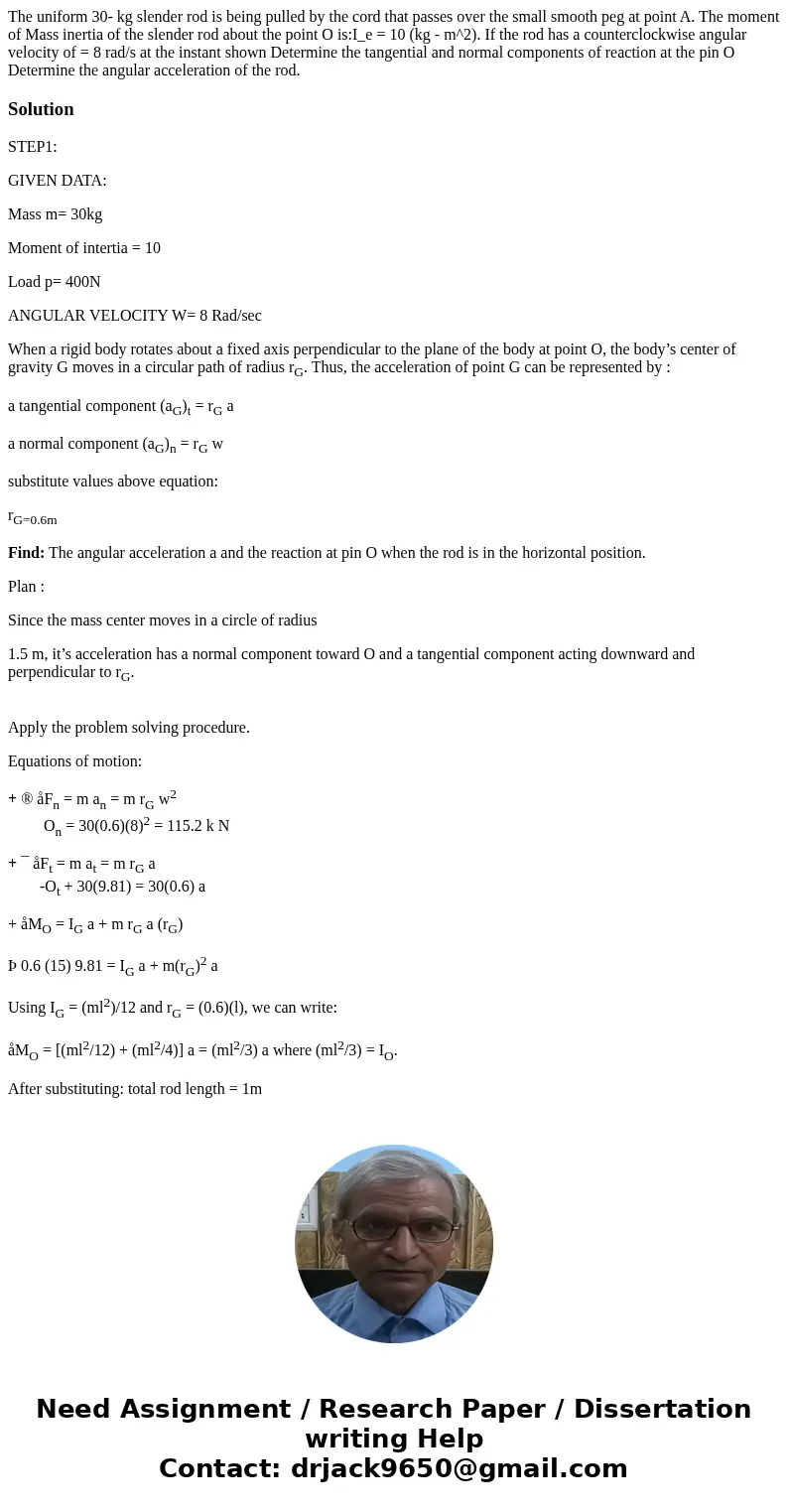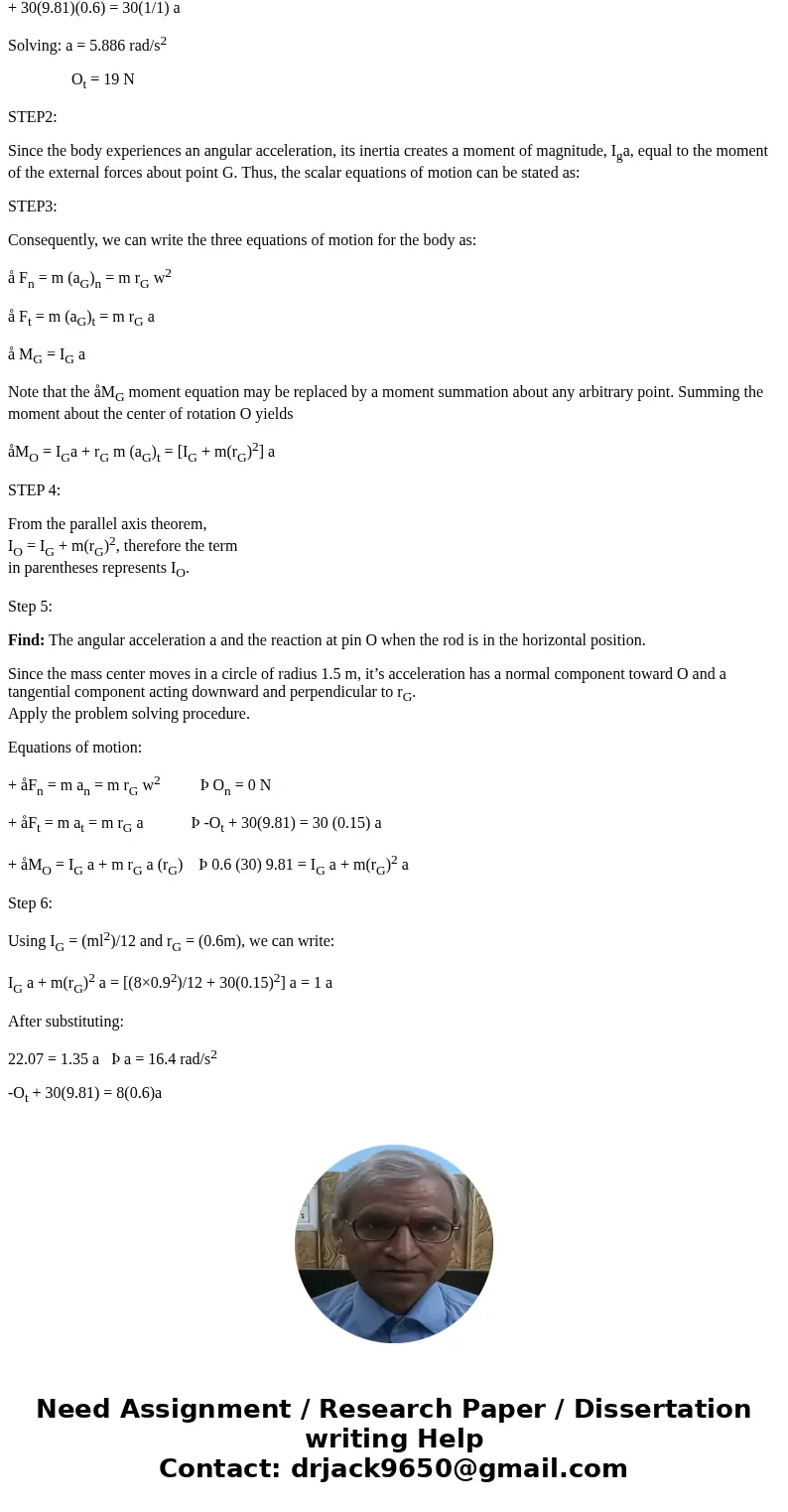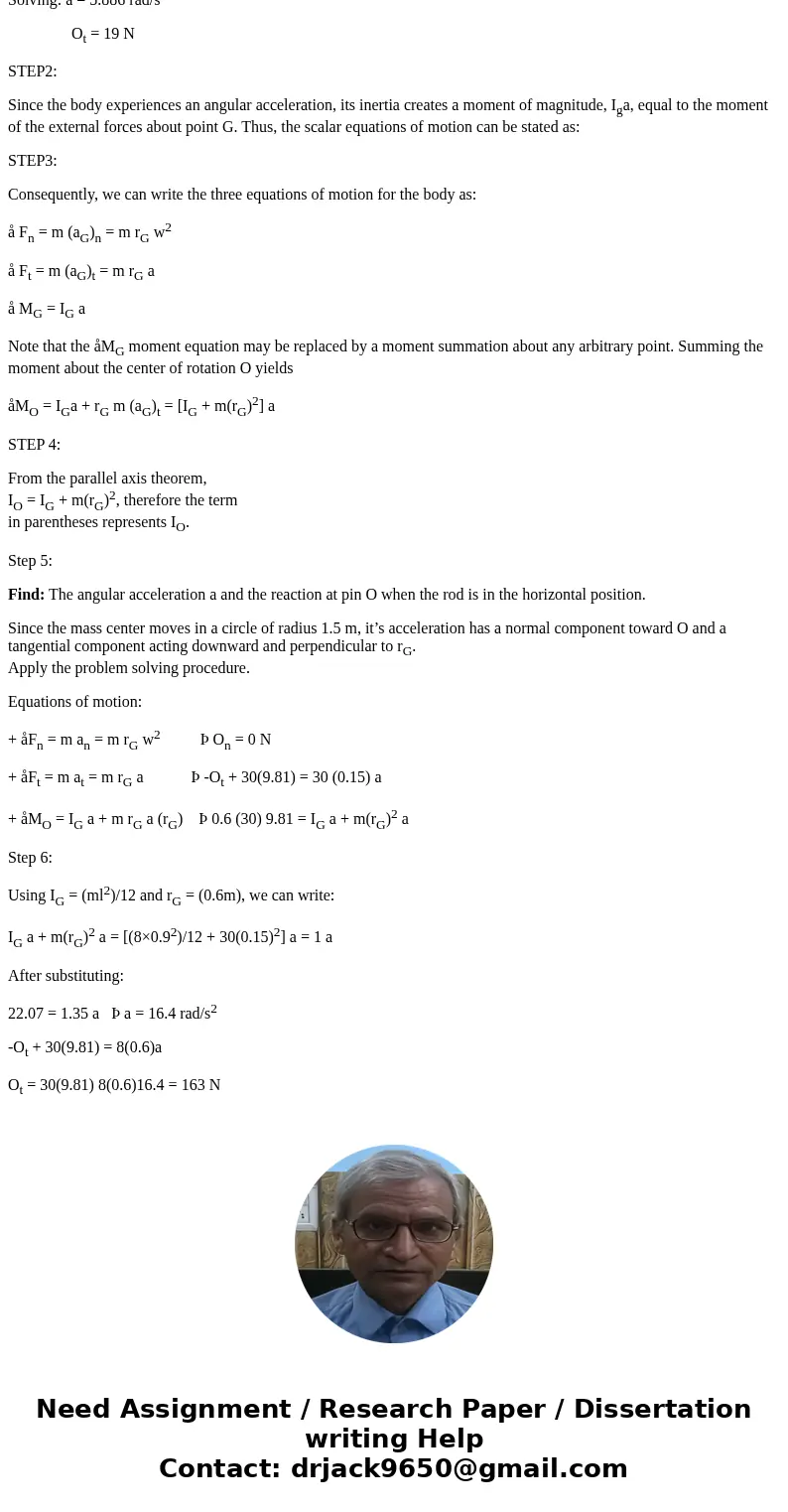The uniform 30 kg slender rod is being pulled by the cord th
Solution
STEP1:
GIVEN DATA:
Mass m= 30kg
Moment of intertia = 10
Load p= 400N
ANGULAR VELOCITY W= 8 Rad/sec
When a rigid body rotates about a fixed axis perpendicular to the plane of the body at point O, the body’s center of gravity G moves in a circular path of radius rG. Thus, the acceleration of point G can be represented by :
a tangential component (aG)t = rG a
a normal component (aG)n = rG w
substitute values above equation:
rG=0.6m
Find: The angular acceleration a and the reaction at pin O when the rod is in the horizontal position.
Plan :
Since the mass center moves in a circle of radius
1.5 m, it’s acceleration has a normal component toward O and a tangential component acting downward and perpendicular to rG.
Apply the problem solving procedure.
Equations of motion:
+ ® åFn = m an = m rG w2
On = 30(0.6)(8)2 = 115.2 k N
+ ¯ åFt = m at = m rG a
-Ot + 30(9.81) = 30(0.6) a
+ åMO = IG a + m rG a (rG)
Þ 0.6 (15) 9.81 = IG a + m(rG)2 a
Using IG = (ml2)/12 and rG = (0.6)(l), we can write:
åMO = [(ml2/12) + (ml2/4)] a = (ml2/3) a where (ml2/3) = IO.
After substituting: total rod length = 1m
+ 30(9.81)(0.6) = 30(1/1) a
Solving: a = 5.886 rad/s2
Ot = 19 N
STEP2:
Since the body experiences an angular acceleration, its inertia creates a moment of magnitude, Iga, equal to the moment of the external forces about point G. Thus, the scalar equations of motion can be stated as:
STEP3:
Consequently, we can write the three equations of motion for the body as:
å Fn = m (aG)n = m rG w2
å Ft = m (aG)t = m rG a
å MG = IG a
Note that the åMG moment equation may be replaced by a moment summation about any arbitrary point. Summing the moment about the center of rotation O yields
åMO = IGa + rG m (aG)t = [IG + m(rG)2] a
STEP 4:
From the parallel axis theorem,
IO = IG + m(rG)2, therefore the term
in parentheses represents IO.
Step 5:
Find: The angular acceleration a and the reaction at pin O when the rod is in the horizontal position.
Since the mass center moves in a circle of radius 1.5 m, it’s acceleration has a normal component toward O and a tangential component acting downward and perpendicular to rG.
Apply the problem solving procedure.
Equations of motion:
+ åFn = m an = m rG w2 Þ On = 0 N
+ åFt = m at = m rG a Þ -Ot + 30(9.81) = 30 (0.15) a
+ åMO = IG a + m rG a (rG) Þ 0.6 (30) 9.81 = IG a + m(rG)2 a
Step 6:
Using IG = (ml2)/12 and rG = (0.6m), we can write:
IG a + m(rG)2 a = [(8×0.92)/12 + 30(0.15)2] a = 1 a
After substituting:
22.07 = 1.35 a Þ a = 16.4 rad/s2
-Ot + 30(9.81) = 8(0.6)a
Ot = 30(9.81) 8(0.6)16.4 = 163 N



 Homework Sourse
Homework Sourse